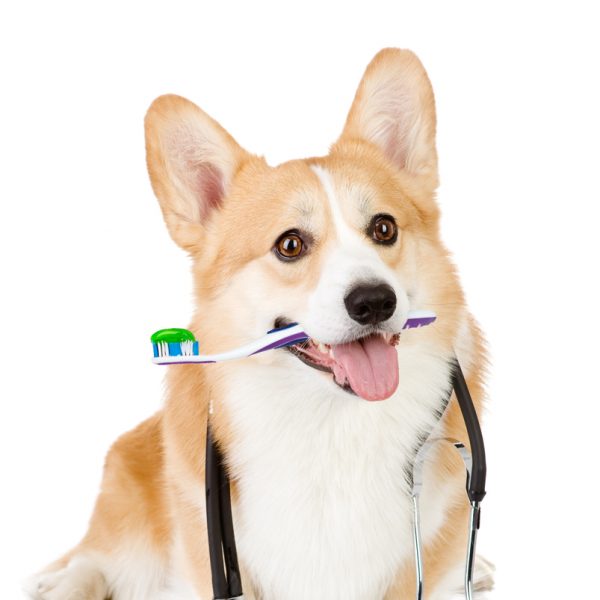How to Keep Your Pooch’s Teeth Healthy
 Many dog owners overlook the need dogs have for daily dental care—or even any degree of it! Dental care is actually very important for dogs.
Many dog owners overlook the need dogs have for daily dental care—or even any degree of it! Dental care is actually very important for dogs.
If your dog has tooth problems, it might affect his behavior or his movements. But you may not notice at all!
This is a problem because tooth or gum infections can cause systemic infection for dogs, just as untreated dental problems can eventually cause infection and be fatal to humans.
Tooth problems in dogs are very common: vets report that 85 percent of dogs over the age of four suffer from periodontal disease, which can cause them to lose their teeth or get an infection.
Here are some tips on getting your puppy’s teeth and gums in good shape:
Daily Brushing is Ideal
Brushing your dog’s teeth every day should be your ultimate goal. It might not happen immediately. Think about it: your dog is probably going to have to really adjust to getting their teeth brushed. What a weird experience.
So, using positive reinforcement like treats and extra playtime, ease your dog into making tooth-brushing a daily ritual. Start by doing it a few times a week, increasing the frequency as they start to mind it less.
Examine Your Puppy’s Mouth Regularly
Since dogs often don’t show signs of pain or irritation even if they have a problem like a cracked tooth or severe periodontal disease, it’s important to know what your dog’s mouth looks like when it’s healthy.
And, it’s also important to check it out at least once a week, or even whenever you brush your dog’s teeth, which should be every day. Dogs may hide feelings of pain because they’re genetically programmed not to show signs of weakness.
Know the Signs of Serious Dental Problems
It’s important to look out for obvious things like loose and broken teeth and also for more subtle signs of other problems like gum disease, tooth decay, and more. Here are some other signs that something’s going on in your pooch’s mouth:
- Noticing red or bleeding gums
- Finding blood on a chew toy (Note: a little blood is normal during puppy teething)
- The dog vocalizes when they yawn or eat
- Bad breath
- Lumps or bumps in the dog’s mouth
- Ropey or bloody saliva
- The dog is wary of its head being touched
- It’s hard for the dog to pick up food
- The dog chews on one side of its mouth
- Nasal discharge and sneezing
Regular Vet Care
Just like humans, it is good for dogs to get their teeth cleaned at least once a year. Regular tooth cleanings and X-rays will go a long way toward preventing painful chronic dental conditions.
Other Ways to Help
Making sure your dog gets “chew time” daily will help your dog’s teeth stay healthy. Choose safe chew toys like those made of rubber, some nylon toys, or uncooked butcher-type bones that are safe for your dog. Avoid rawhide and most animal bones advertised as “bone treats”.
Make sure you are feeding your pup high-quality dog food. If your dog already has tooth problems, talk with your vet about getting them on a “dental diet.”
Dry food can help with oral hygiene, as can feeding your pup foods like carrots, which help to scrub the teeth. However, if you choose to feed your dog vegetables, make sure you’re feeding them safe ones.
